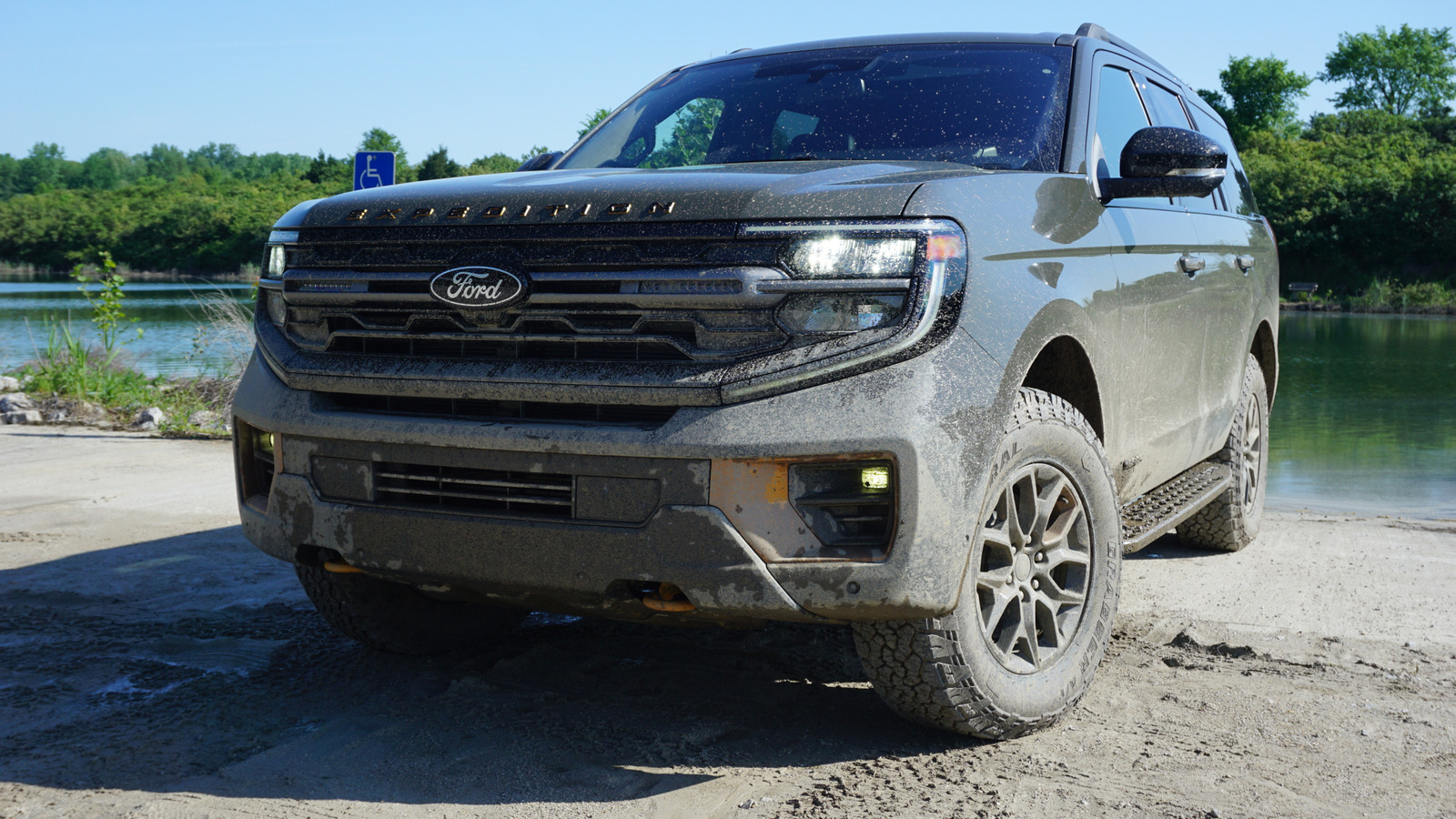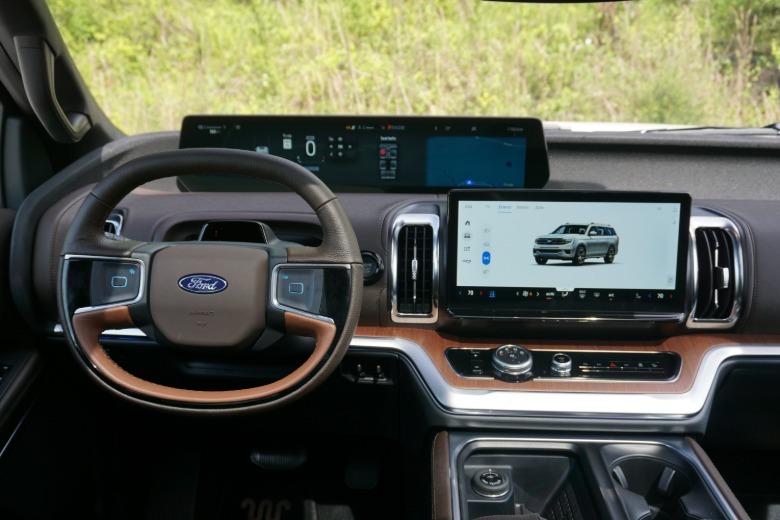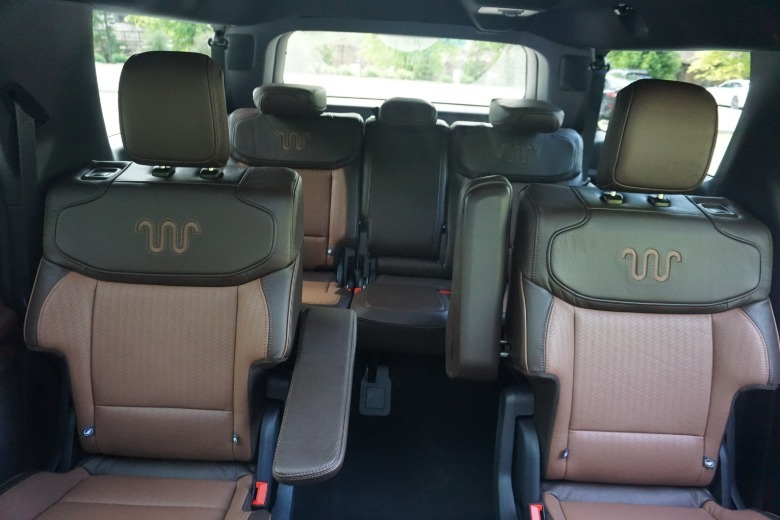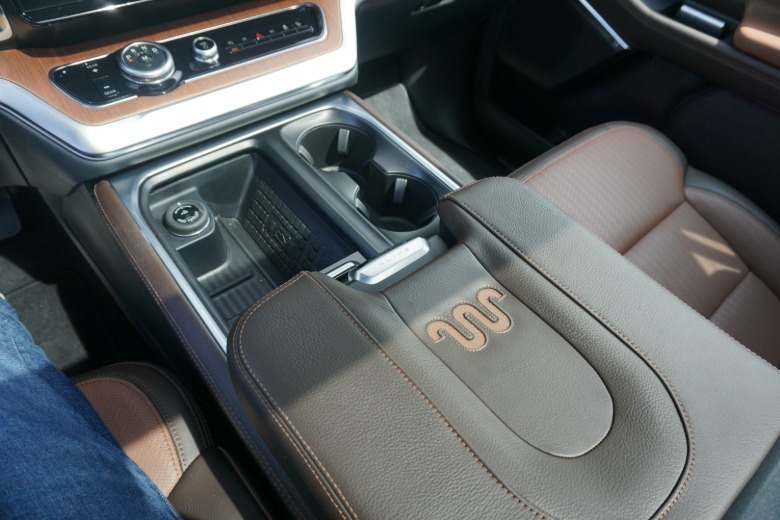Things are a bit more complicated inside, both literally and figuratively. The interior of the Expedition is totally redesigned for the 2025 model year and there are three things you’re going to notice right away: the 24-inch screen by the windshield, the smaller touchscreen right below it and the squircle steering wheel that seems to be absent of buttons. I’ll start with the panoramic screen and work clockwise.
Essentially this screen is what’s offered in the Lincoln Navigator but cut in half. The display serves as your gauge cluster, an information display and a permanent home for a Google Maps display. Despite how big it is, it’s not terribly customizable. You can’t do much to change the cluster, for instance. An extremely minimalist tachometer will only appear when you’re in Sport or Off-Road mode; other than that you’ve got a big digital speedometer and a display for your driver-assist systems. To the right of that is your “widgets” display, which is the only truly customizable thing in the entire setup. From there, you can choose to display trip information, weather, auxiliary gauges and music, among a few other things. To the right of that is an auxiliary navigation screen that cannot be moved.
Next up, we’ve got the main command screen. This controls pretty much every function of the Expedition from navigation and music to your headlights and HVAC system. Hell, it’s even when you store your memory seat position. Luckily, it does work rather well. It’s simple to figure out and quick to respond to your touch. Either of the two screens can also play YouTube videos if you’re bored.
Less simple to use is the new two-spoke squircle steering wheel. It’s still basically a circle, so you can place your hands where you usually put them. The real issue lies with the button setup Ford decided to implement. What we’ve got here are two D-pads that control your driver assist system including BlueCruise on the left, and on the right control your stereo. The right controls are also used to adjust your pedals and steering wheel. I promise this isn’t as annoying as you think it is. Once you’ve got these things set, you never have to worry about them. The real problem lies with the fact it’s hard to tell where you’re pressing on the D-pads. Even though the functions of each part of the controls show up in your gauge cluster, it’s hard to know exactly where your finger is unless you take your eyes off the road. Perhaps this would improve with time, but I found myself having to look down to see where my thumb was. All that being said, a huge benefit of the steering wheel/pano screen placement is that the screen is never obscured.
The rest of the interior is updated from the previous truck as well. Don’t worry, it still has tons of space. I’m 6’1″, and I could fit comfortably behind myself in all three rows, so I’m sure you and your annoying children will too. In the regular wheelbase Expedition, there’s plenty of trunk room for your stuff, but if that isn’t enough, you can always jump to the Max to fit in every belonging you’ve ever had. For reference, with the third row up, the Expedition Max still has 36.1 cubic feet of cargo room. Admittedly, that’s slightly behind the 41.5 cubic feet you get in a Suburban, but I’m sure you’ll make it work. Every seat gets about 9,000 cup holders and USB ports as well. As always, there are seating options for seven or eight passengers depending on if you get a second row bench or captain’s chairs.
One neat party trick is the power-sliding center console. At the press of a button, the whole thing shifts backward to reveal a massive storage area big enough for your secret gallon of milk. It can also come in handy for sending a drink back to your younger kid in the second row who can’t quite reach it.





